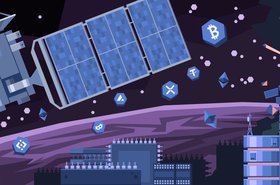If it was as easy as it seems to run on 100 percent renewable energy, everyone would do it.
While a significant factor in this lies in governments not wanting to spend money investing in the infrastructure necessary to have widespread renewable energy accessible, another issue is that many of the green sources of power can be intermittent.
For those who do turn to renewables, like wind or solar power, backup generators lie in wait for the moment the sun decides to go to bed, or the wind fails to blow. Having this redundancy in action is essential for data centers, with so many mission-critical industries relying on connectivity to keep people and their data safe. To simply power down when the weather decides to be uncooperative is not an option.
The process of monitoring what source your energy comes from and when is called carbon accounting.
Like weighing up your finances, seeing periods of high spending, and budgeting effectively for them, carbon accounting looks at how much carbon content is in the grid at any given time.
In the latest Zero Downtime podcast episode, we sit down with Simone Accornero, the CEO of FlexiDAO to talk about how carbon accounting works, and how we can achieve 24/7 renewable, or green, energy.
“The carbon related to electricity consumption and production is a really big world,” said Accornero.
“Electricity flows in the grid and when the electricity is produced, all the electrons merge and it's physically impossible to actually track the electron. That's why the more accurate definition will be carbon accounting because you do an exercise to try to estimate the carbon content in the electricity grid.
“Wherever the electricity is produced and consumed, it is physically impossible to say that that electron comes out from a solar panel, and now it's in your socket. You cannot do that. But you can say how much carbon there was in the grid at the moment that you consumed it. So all the solar, all the nuclear, all the gas, all the coal, and you can put it all together and calculate what was the carbon intensity of the grid at that moment in time.”
Once you can establish the amount of carbon in the grid at the time of consumption, you can start considering how we can de-carbonize the grid. For Accornero, the important thing to do is motivate people to spend their money on more reliable backup sources.
“Essentially, you create market incentives. Right now, there's a lot of push toward solar and wind, which are not available at all points in time. By looking at the hour, you create a framework, a market system that incentivizes the decarbonization of the more ‘complex’ hours. That way you're sending signals to developers and to producers that they should think more of their baseloads.
“A baseload means it's a carbon-free source that has a predictable and controllable outcome: you can decide when you turn it on or turn it off. These would be the equivalent of gas or a fossil baseload, they could be thermal, even hydro, or batteries. So, you create incentives, you create demand for a production that is a fossil-free baseload, and you create demand for those hours that right now are the most polluting ones.”





